The ancient gods and goddesses of Celtic mythology remain unknown variables to the world today. Unlike the Greek gods, Roman gods, or Egyptian gods, we know very little about them. Who was their common forefather? What was the name of their mother goddess? What realms and domains did the Celts assign to these gods? Celtic myths about their gods and their heroes can be difficult to separate from one another. But both are equally fascinating to learn about.
Table of Contents
Who Were the Main Celtic Gods and Goddesses?
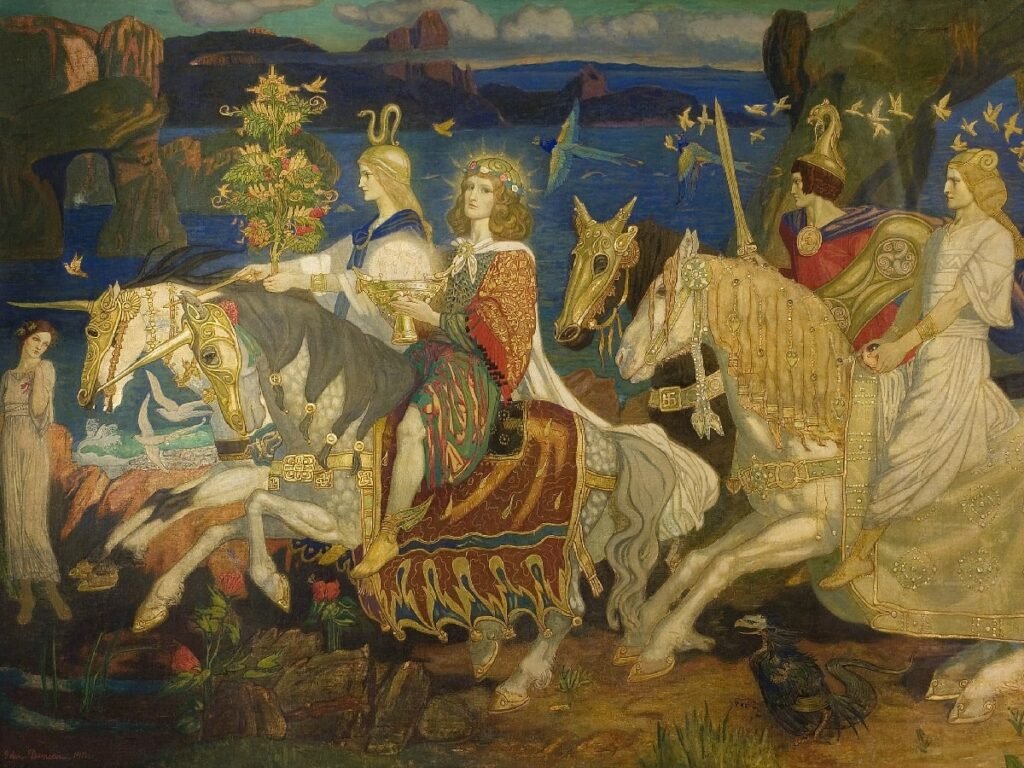
When we look into the Celtic pantheon, there are some gods that garner more attention than others. Celtic gods and goddesses like Dagda, Danu, the Morrigan, Lugh, and Brigid are the ones whose names may come up more than any others. While they may have been the major Celtic gods and goddesses, that does not cancel out the importance of other deities of Irish mythology, like Bres or Medb, or Epona.
In Irish folklore, it is often difficult to differentiate between their gods and their heroes. The ancient Irish kings of the Tuatha de Danann also form part of the Celtic pantheon. And one has to wonder whether they were real mortals or just myths and legends. The Celts believed that the ancient Celtic gods were their ancestors and myth and ancient history have become inextricably linked in the Irish imagination.
Different Types of Celtic Gods and Goddesses
When we speak of Celtic deities now, we refer to the Gaelic deities that the Gaelic-speaking people of Ireland and parts of Scotland worshiped. Of these, the most important subgroup worshiped in pre-Christian Ireland was the Tuatha de Danann. Prominent members of the Tuatha de Danann were:
- Dagda
- Lugh
- Brigid
- Bres
Like the Aesir and Vanir of the ancient Norse gods, there was also another subgroup within the Celtic gods that was perpetually opposed to the Tuatha de Danann. This group was called the Fomorians, the supernatural species that had occupied the land before the Tuatha de Danann came to Ireland. While some of the above gods, like Lugh and Bres, also had Fomorian blood, for the most part, the ancient Celts did not acknowledge the Fomorians as Celtic deities. They viewed them as enemies of the gods instead.
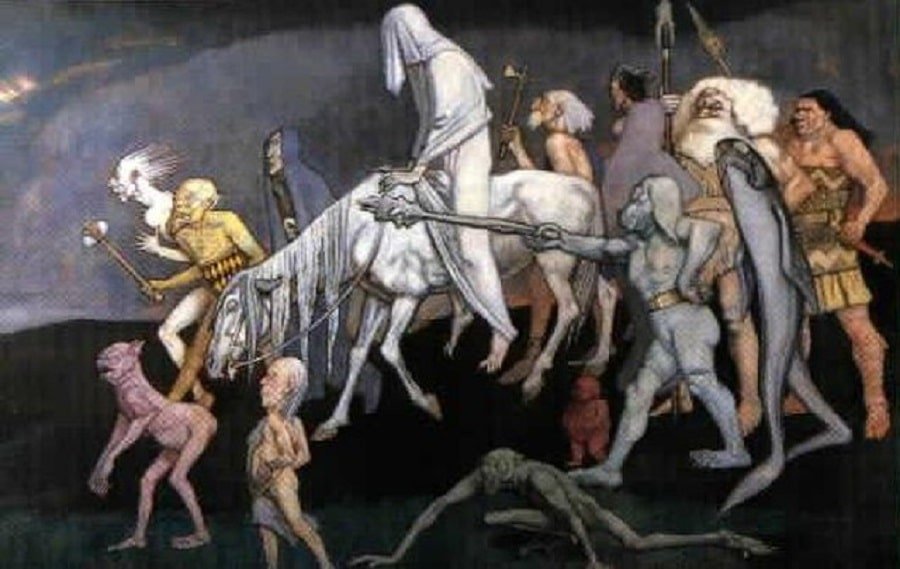
Danu and the Tuatha de Danann
According to Irish folklore, the Tuatha de Danann, which means ‘Tribe of Danu’ was a race of supernatural creatures. These ancient Celtic gods, who made up most of the gods and goddesses of Celtic mythology were also considered the ancestors of the Celtic people.
These deities live under the patronage of the goddess Danu and are supposed to reside in the Otherworld or Tír na nÓg. They are an almost perfect version of humans, with various gifts and magical skills granted to them by the goddess Danu. They are associated with certain places in Ireland or Scotland, specifically burial mounds or tombs, which were seen as passages to the Otherworld.
These Celtic gods were neither fully human nor completely ethereal, as was the case with many pagan pantheons. They were exiles, fallen from the Celtic idea of heaven, and considered to be the people in between man and god. They had superhuman powers and abilities but were still not so far apart from us as to be beyond our understanding.
The Morrigan: Threefold Celtic Goddess
Another interesting aspect of Celtic mythology was their tendency to believe in threefold goddesses. This is most evident in the case of the Celtic goddess referred to as the Morrigan. There are two ways that the goddess is referred to: as Morrigan, the individual being with all her powers, or as The Morrigan, the triple goddess or the three sisters who make up the whole. These three sisters have a variety of names, such as Morrigan, Medb, Badb, Macha, Eriu, and Fodla. This can be very confusing since these are also individual goddesses with their own powers and domains.
Perhaps all of these are aspects and faces of the one goddess. Perhaps the differentiation arose in later periods of Celtic mythology or when the Christians were attempting to piece together a pantheistic religion. At any rate, this being is one of the most powerful forces in Celtic mythology.
Many sovereignty goddesses were also seen as aspects of Morrigan. In Celtic mythology, a sovereignty goddess was one who personified a region and conferred sovereignty upon a king by coupling with him.
Danu
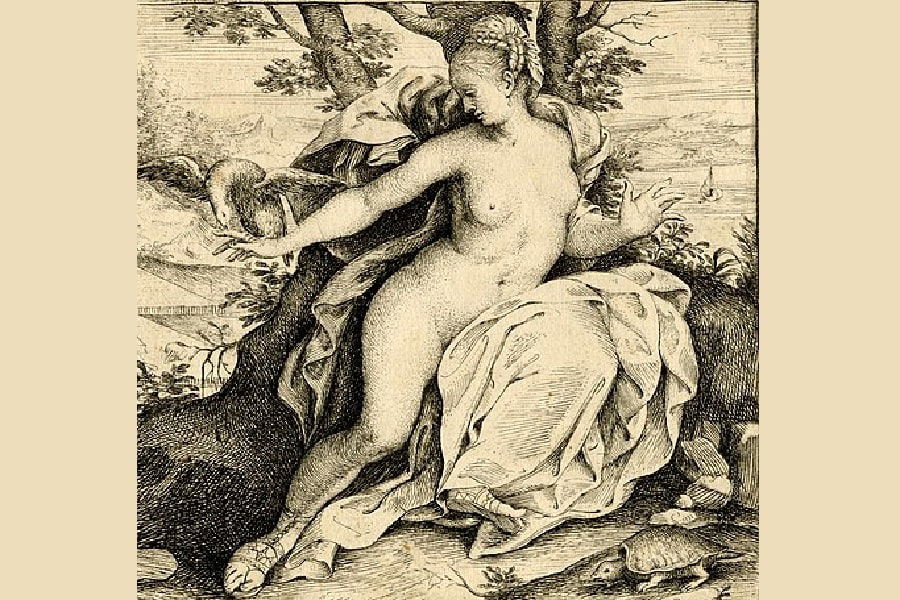
Realms: The Celtic mother goddess, nature, fertility, wisdom, earth, art, and poetry
Family Ties: Patron and protector of the other Celtic gods
Fun Fact: She may have had links with the primordial Hindu goddess Danu, whose name meant ‘liquid’ or ‘river’ and was the namesake of the River Danube.
Danu is the mother goddess of the ancient Celtic gods. A divine being who gave the Tuatha de Danann the powers and abilities that they possess, Danu does not frequently appear in Irish mythology and legends. She is also considered a warrior goddess, although this aspect of her is not often emphasized.
It is unlikely that Danu was the literal mother of the Celtic gods and goddesses. The term ‘mother’ is meant more metaphorically since she was the one who lent them sanctuary in the Otherworld during their exile and helped guide them back to Ireland, their home.
Danu was one of the most ancient and primordial beings in Irish mythology. She appeared in the form of a beautiful woman and was the goddess of nature. The people of ancient Ireland associated her with the more peaceful and spiritual side of nature. She was also associated with water and fertility.
READ MORE: Danu: The Mother Goddess in Irish Mythology
Dagda
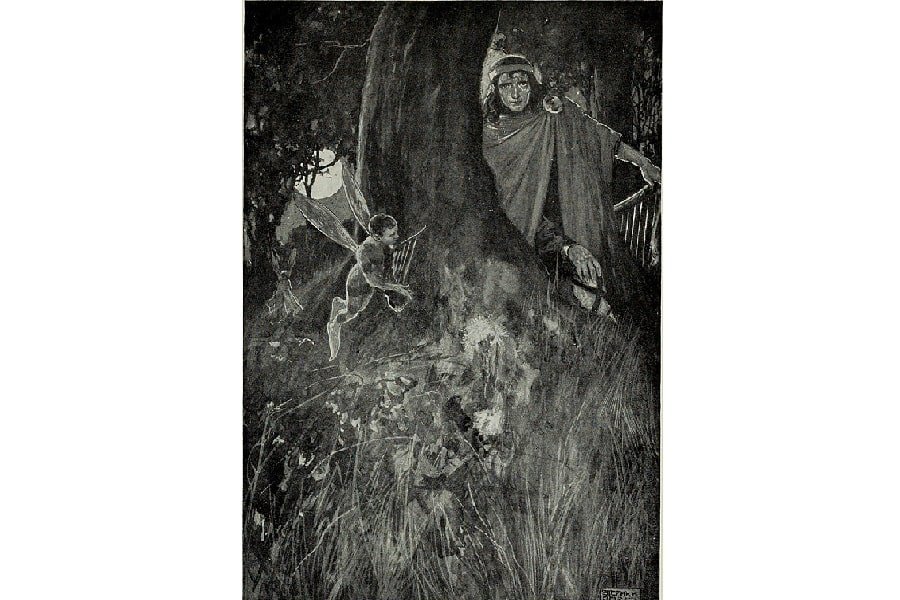
Realms: Father god of Ireland, fertility, agriculture, seasons, weather, wisdom, magic, Druidry
Family Ties: Father of Brigid and Aengus, husband of Morrigan
Fun Fact: He had two pigs, one that was always growing and one that was always roasting
This great Celtic god was a figure of immense power. Referred to as the Good God, he was the leader of the Tuatha de Danann and was the father of many of the most important Celtic gods and goddesses. As the god of agriculture and fertility, he was the one the ancient Celts depended on for bountiful harvests and healthy cattle.
Dagda, or the Dagda as he was commonly known, also had the power to control life and death and was thus strongly associated with Morrigan, his consort. But he was also a great patron of the arts and magic. He was an important deity for druids and his harp was said to summon the seasons.
Unlike the kings of the Greek and Roman deities, this powerful Celtic god was said to be cheerful and good-natured. He was also said to be very tall and very pot-bellied. This stature was meant to symbolize plentitude and generosity.
READ MORE: The Dagda: Ireland’s Father God
Morrigan
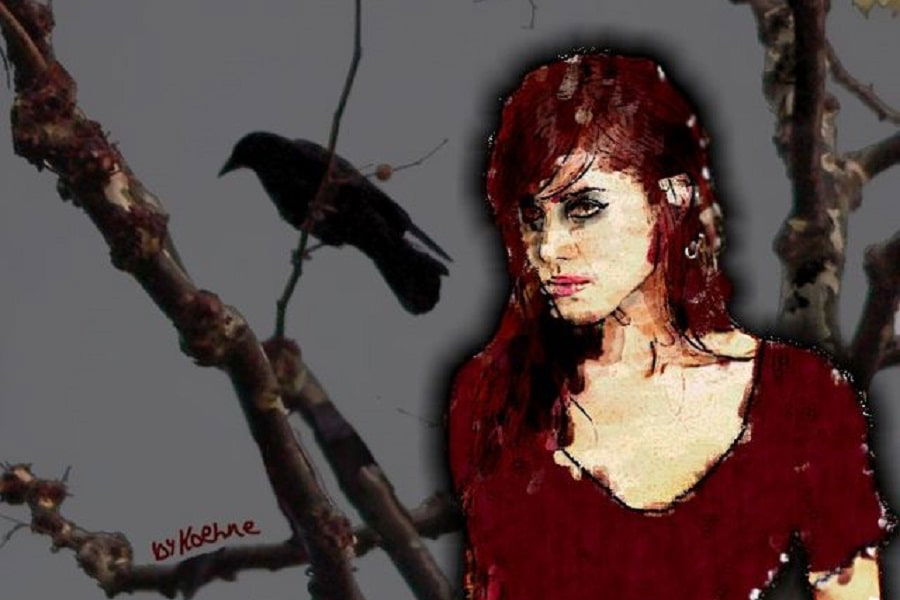
Realms: War goddess, death, fate, destiny, protection, sovereignty
Family Ties: Consort of The Dagda
Fun Fact: Some scholars and writers link her with the figure of Morgan le Fay of Arthurian legend, the magical half-sister of King Arthur.
This particular Irish goddess is a scary one. She was often referred to as the Phantom Queen or the Queen of Demons. As the Celtic goddess of war, she had the power to grant victory or defeat in battle. She was also a shapeshifter and would take the form of a crow or raven, often hovering over a battlefield in that form.
The Phantom Queen seems an odd match with the Good God. But according to the ancient Celts, the annual coupling of the two around the time of Samhain would result in a bountiful harvest. Morrigan or The Morrigan was apparently a jealous wife.
She was not just an individual goddess but also a triple goddess, made up of the goddesses Badb, Macha, and Nemain. They symbolized Morrigan’s different aspects of shapeshifting, protection, and battle.
One of the most well-known stories about Morrigan is her encounter with the hero Cú Chulainn on a battlefield where he did not recognize her and insulted her. Cú Chulainn died soon after.
Lugh
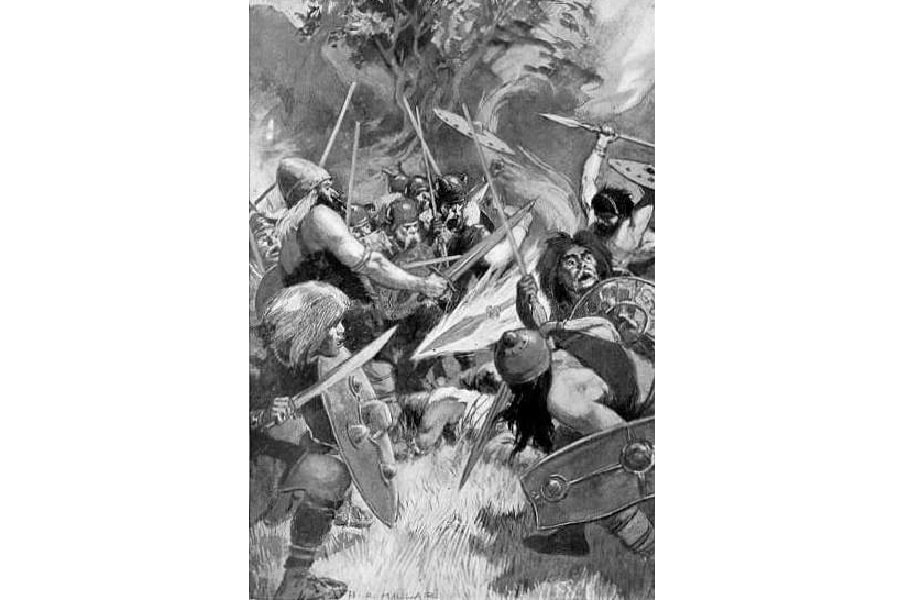
Realms: Sun god, light, craftsmanship, justice
Family Ties: Son of Cian and Ethniu, father of Cú Chulainn
Fun Fact: Lugh invented the board game fidchell and started an event called the Assembly of Taiti, which was very similar to the Olympic games.
The god Lugh is one of the well-known and important Celtic gods and goddesses. Equated with the Roman god Mercury when the Romans conquered the British Isles, Lugh was a great warrior who wielded a famous spear. He was half Tuatha de Danann and half Fomorian, although he sided with the former in their battles.
Lugh’s most famous feat in Celtic mythology was killing his grandfather, the giant Balor of the Fomorians, and leading the Tuatha de Danann to victory against the Fomorians who had been oppressing them. He killed Balor with a slingshot through his giant, destructive eye.
The Celtic god overthrew Bres after the defeat of the Fomorians and ruled for over forty years. He was known as Lugh of the Long Arm because of his skill with the spear. He was allowed to join the Tuatha de Danann by Nuada, their High King at the time, because of the many skills that he possessed, from medicine to battle to sorcery.
Cailleach
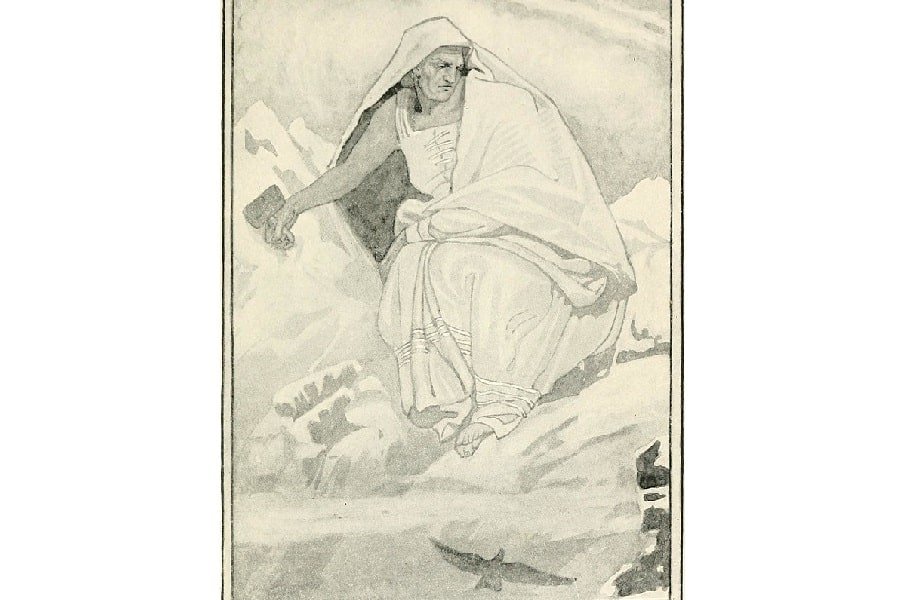
Realms: Creation of landscape, weather, storms, winter
Fun Fact: In Ireland and Scotland, a corn dolly made to represent her has to be fed and housed by the farmer who brings in his harvest last for the whole year.
One of the more obscure of all the Celtic gods and goddesses, Cailleach is the goddess of winter. Physically, she is said to look like a hag or crone, with a veil covering her face. She had a bow-legged, hopping gait and would stride across the landscape of Ireland and Scotland, changing the shapes of the rocks and transforming the surroundings.
She was a force that was neither completely good nor evil. Cailleach cared for the animals through the winter and wolves were her favorite. In Scotland, she was believed to herd deer. Because of her association with storms and winter, she was a destructive force. But she could also be a creative force since she was charged with creating the natural landscape.
She was referred to as the Hag of Beara in Ireland and Beira, Queen of Winter, in Scotland because she lived on the Beara Peninsula in Ireland.
Brigid

Realms: Healing, wisdom, smithing, poetry, protection
Family Ties: Daughter of Dagda, Wife of Bres
Fun Fact: She was syncretized with the Christian saint of the same name, St Brigid of Kildare, and they share the same holy sites.
The goddess Brigid was the Celtic goddess of healing. As per Celtic mythology, she was a triple goddess consisting of three sisters of the same name. The three Brigids each had their own domains – poetry, healing, and smithing – to rule over.
Brigid also had interesting connections with both the elements of fire and water, being associated with the ever-burning flame in Kildare and the many holy wells around Ireland.
She became one of the most popular Celtic deities even after the Roman Conquest and was often equated with the goddess Minerva.
READ MORE: Brigid Goddess: Irish Deity of Wisdom and Healing
Medb

Realms: Queen of Connacht
Family Ties: Wife of Ailill mac Máta
Fun Fact: She had seven sons, all named Maine because a druid told her that a son called Maine would kill Conchobar.
As is the case with more than one Celtic deity, it is difficult to determine whether Medb was a Celtic goddess or a mythical human figure. Often, she is associated with Morrigan. So she may have been some form of the sovereignty goddess.
Medb was believed to be extremely strong-willed and ambitious, because of which she had powerful enemies, like Conchobar, the King of Ulster. She was extremely beautiful and reputedly robbed men of their strength and courage just by one look at her.
She had many lovers and several husbands, who held the position of King of Connacht one after another.
READ MORE: Medb: Queen of Connacht and Goddess of Sovereignty
Cernunnos
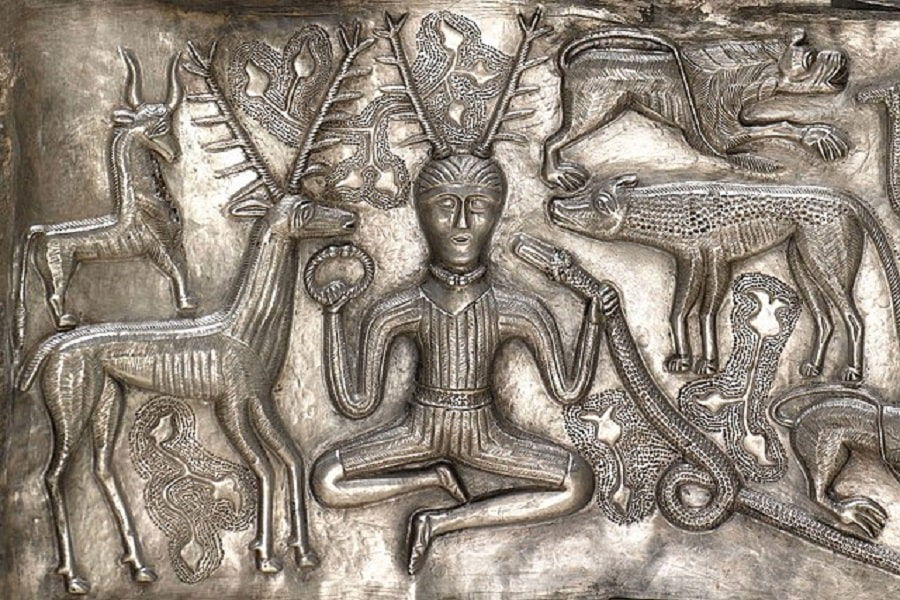
Realms: God of the forest, animals, vegetation
Fun Fact: Cernunnos appears in both the Marvel comics and the DC comics as one of the ancient Celtic gods and goddesses. An interesting being from Celtic mythology resembling closely Cernunnos is Herne.
This Celtic god was also called the Horned God because he was portrayed wearing antlers. He was originally a proto-Celtic god worshiped by the Gauls. He was especially associated with stags, bulls, dogs, and horned serpents. Cernunnos was the god of the forest and the animals. He was also the god of the hunt and he protected people so long as they did not hunt more prey than they needed.
Among the many Celtic gods, Cernunnos is one of the odd ones who does not seem to be quite human in appearance. This may have been because he predated Celtic mythology and the pantheon of the Gaelic speaking Irish. He was at times associated with the Roman god of death Dis Pater.
In Wiccan traditions and Neopaganism, Cernunnos again gained popularity as one of the most important deities. Samhain, the Wiccan counterpart of Halloween, is celebrated in honor of the Horned god.
READ MORE: Cernunnos: Lord of the Wild Things
Neit
Realms: War
Family Ties: Uncle of Dagda, grandfather of Balor, husband of Nemain and Badb
Fun Fact: His name means ‘impassioned’ or ‘fighting’ in Proto-Celtic.
Neit was the fearsome god of war in Celtic mythology. Although he was the forefather of the Fomorians, he fought with the Tuatha de Danann against them and was killed in the famous Second Battle of Moytura.
The Irish goddess Nemain (and possibly even Badb), of the Morrigan trinity, was his wife. He commanded great respect from many of the great Irish tribes. Although he had a son of his own, Fomorian Dot, he was much closer to his nephew Dagda. Dagda had gifted him a storehouse but when Dagda’s son Aed died, the generous Neit allowed the storehouse to be used for his burial.
Macha
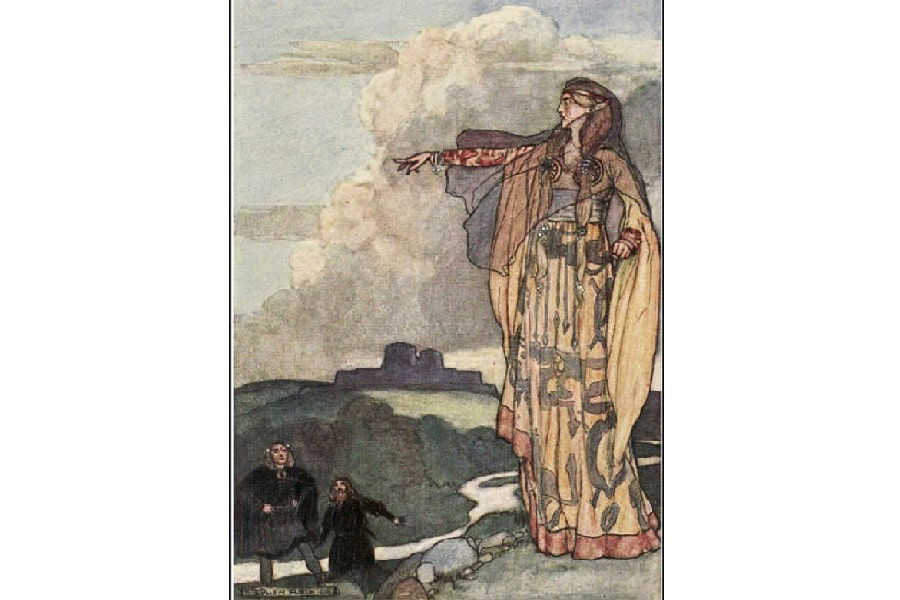
Realms: Sovereignty goddess, land, kingship, fertility, war, horses
Family Ties: Daughter of Ernmas, sister of Badb and Morrigan
Fun Fact: Macha Mong Ruad (Macha of the red hair) was the only queen in the List of High Kings of Ireland.
This Irish goddess was also a sovereignty goddess, associated with Ulster. In Celtic mythology, several figures by the name Macha appear and they may have been forms of the same deity or simply women bearing the name of the goddess. She is also associated with the Morrigan and is thought to be a different form of the powerful goddess of war.
There are many different women by the name Macha mentioned in Irish folklore. They are the daughters and wives of various kings and heroes. It seems unlikely that all these women were the one and same. There is very little evidence that they even existed. So the simple truth may have been that this was the name that was conferred upon them in posterity by the writers and poets.
READ MORE: Macha: War Goddess of Ancient Ireland
Epona
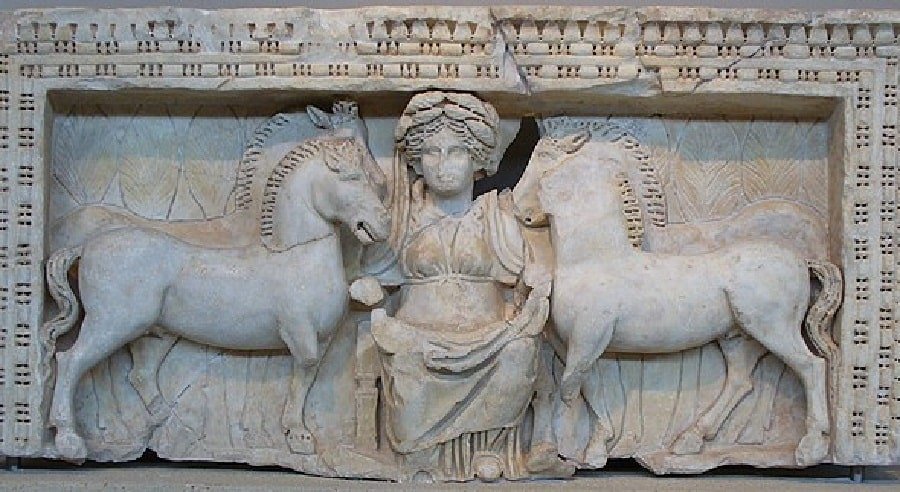
Realms: Protector of horses, ponies, donkeys, and mules, fertility
Family Ties: One story states she was the daughter of a man named Phoulonios Stellos and a mare.
Fun Fact: The Romans began to worship Epona after they began conscripting cavalry units from among the Gauls, who were very good horsemen.
The Celtic goddess Epona was the goddess dedicated to protecting horses. Epona and her horses were believed to lead the soul to the afterlife, after the death of the person. Given her Gaulish name and the fact that depictions of her have been found further East, near the River Danube, she might have been a Germanic goddess that the Celts later adopted.
Epona was the only of the Celtic goddesses who actually had a temple dedicated to her in Rome itself and was worshiped by the Romans. She was the patron and protector of the Roman cavalry. This was quite special for a Celtic deity who was usually only worshiped locally and never inducted into the Roman pantheon at large.
Epona was usually depicted sitting side-saddle (and sometimes lying full length) on the back of a horse. Also surrounding her would be ears of grain, foals, and a cornucopia. Thus, she was also associated with fertility and bountiful harvests. She was worshiped all over Western Europe, not just in Ireland. Images of Epona would be cut into niches of barns and stables, presumably to call for the protection of the goddess over the animals. She was also thought to be the patron of journeys of all kinds, whether physical or mental.
READ MORE: Epona: A Celtic Deity for the Roman Cavalry
Eostre
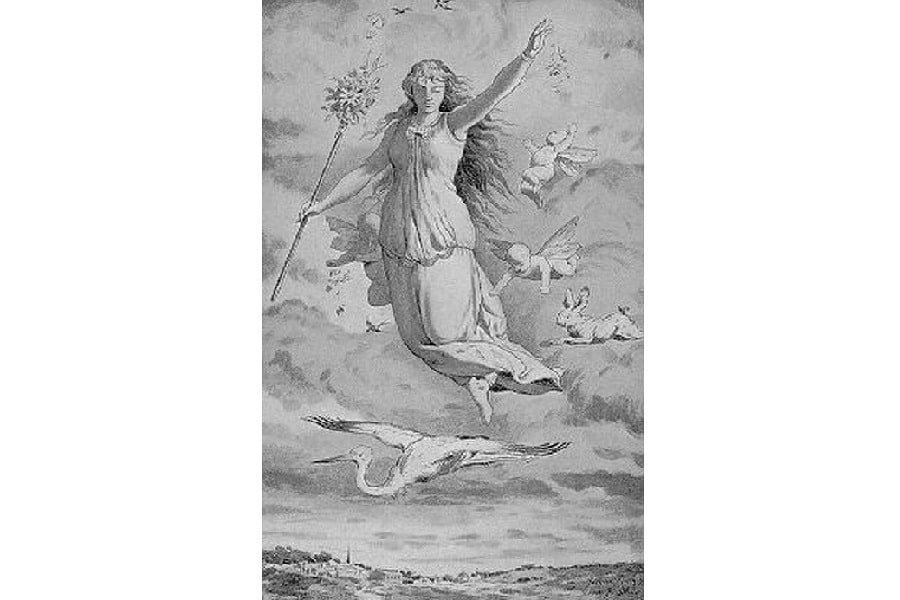
Realms: Goddess of spring, dawn
Fun Fact: The Christian feast of Easter is named after this goddess, whose Germanic name was Ostara.
Eostre was not, strictly, one of the Celtic gods and goddesses. She was a West Germanic goddess whose influence slowly spread over wider Europe. Since she was the goddess of spring, the Anglo-Saxons began to hold a celebration at the beginning of spring in her honor. Gradually, this was absorbed into the Christian religion as the celebration of the resurrection of Jesus.
The goddess of spring and dawn was first referenced and described by the cleric Bede in the 8th century CE, in the book De Temporum Ratione. She has become a popular figure among practitioners of Wicca who celebrate the coming of spring and the spring equinox in her honor. Given her associations with dawn, birth, and fertility, she has come to be associated with rabbits and eggs. Thus, even now, these are the symbols of Easter
READ MORE: Eostre: The Mystery Goddess Who Gave Easter its Name
Taranis
Realms: Thunder, wheel, storms
Fun Fact: The characters in the Asterix series often mention Taranis.
Taranis was the Celtic god of thunder (like Thor was in Norse mythology), although he was worshiped in a variety of places other than Ireland, such as Gaul, Hispania, Britain, and the Rhineland and Danubian provinces. He was a Celtic deity to whom the ancient Celts made sacrifices when they wished for something. He was usually depicted as a bearded figure, with a thunderbolt in one hand and a wheel in the other. Taranis became associated with Jupiter by the Romans for this reason.
Most Celtic gods used the chariot as a vehicle and this made the wheel an important sacred symbol. The kind of wheel that Taranis was depicted with was the chariot wheel with its six or eight spokes. Votive wheels or amulets in the shape of wheels have been found in the sanctuaries of temples from ancient Gaul. These were most probably used by cults devoted to Taranis.
Taranis, along with Toutatis and Esus, formed a triad that the ancient Celts worshiped together. But Taranis was also considered a formidable god in his own right, wielding the thunderbolt as a weapon and commanding the great storms that intimidated the people of those times.
Bres

Realms: King of the Tuatha de Danann
Family Ties: Husband of Brigid, son of Balor
Fun Fact: He grew up very quickly and became the size of a fourteen-year-old boy by the time he turned seven.
Not so much a Celtic god as a controversial mythical figure, the half Tuatha de Danann and half Fomorian Bres was the husband of Brigid. Irish tales differ in their opinions about him. Some claim that he was beautiful to look upon but harsh and forbidding. Others refer to him as kind and noble.
Bres was crowned king when the High King Nuada had to step down. However, he was unpopular among the Tuatha de Danann since he favored his monstrous Fomorian kin. Bres and Balor were defeated in battle by Lugh when the Tuatha de Danann overthrew the Fomorians. Balor was killed by Lugh while Bres and Brigid’s son Ruadan were killed by the metalsmith Goibniu.
However, Lugh spared the life of Bres himself on the condition that Bres would teach the Tuatha de Danann agriculture.
READ MORE: Bres: The Perfectly Imperfect King of Irish Mythology
Arawn
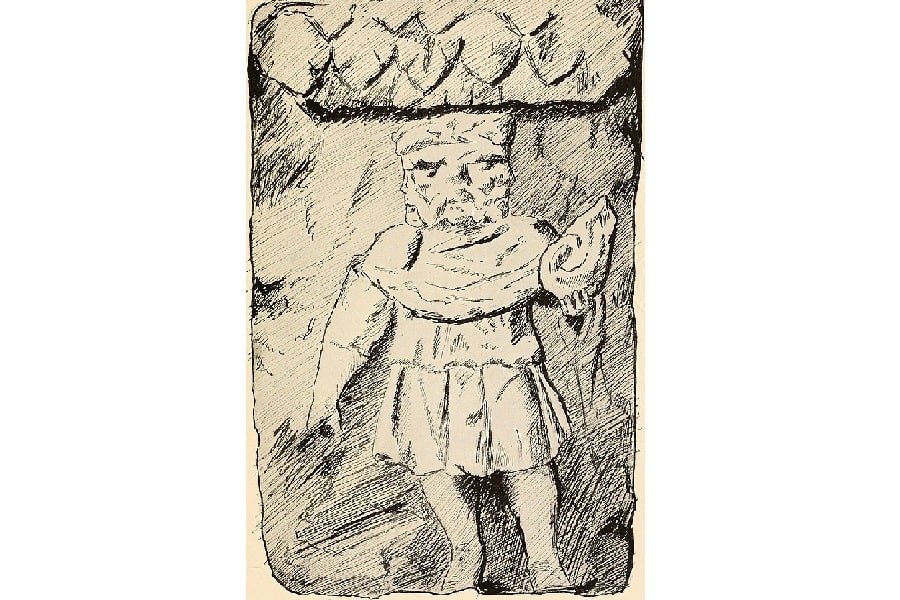
Realms: King of the Otherworld
Family Ties: Unnamed wife who was the Queen of Annwn
Fun Fact: Some writers link Annwn with Avalon from Arthurian legend, a blessed and beautiful paradise.
This Celtic god was the king of Annwn, which in the Celtic world, was the afterlife. Arawn was a primarily Welsh god. The most well-known story about him was the myth where he changed places with Pwyll, the ruler of Dyfed. This happened because one of Pwyll’s dogs had killed a stag from Annwn on a hunt.
Arawn was said to be a great magician and hunter and he had the skill of shapeshifting. In the Celtic religion, there were no negative connotations to his being the king of the afterlife. But with the spread of Christianity, he came to be associated with the Christian concept of Hell and demons more. He was thus called the Lord of the Damned. The Christians believed that he oversaw the souls of those not allowed into heaven.
Arawn was said to be a just and wise ruler who knew many powerful magics. He was beloved of his queen and court and his only adversary seems to have been Pwyll.
Ceridwen
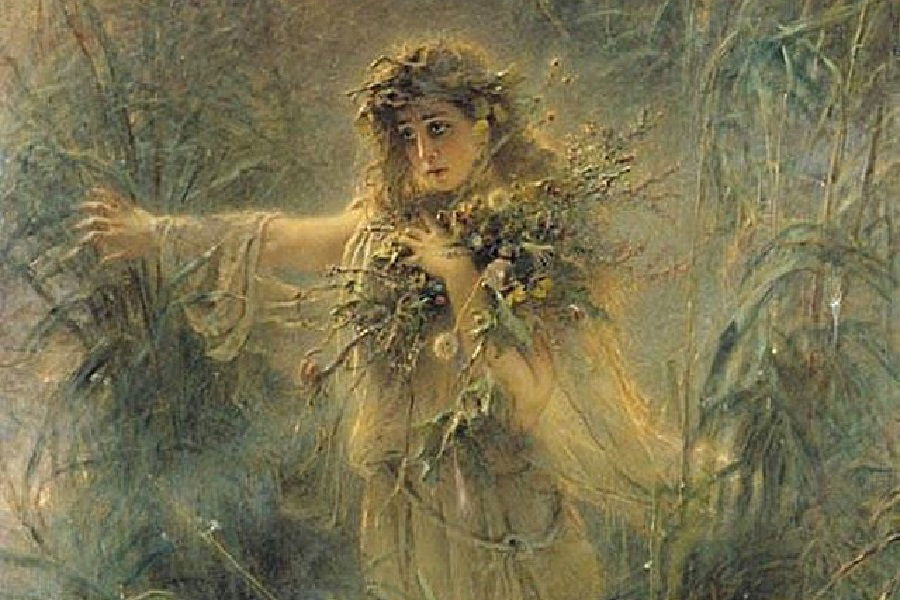
Realms: The goddess of inspiration, poetry, and of the cauldron of transfiguration
Family Ties: A wife of the giant Tegid Foel and a mother of Crearwy and Morfran
Fun Fact: Ceridwen ate her servant boy Gwion Bach, and he was later reborn as the famous Welsh bard Taliesin.
According to Welsh legends and folklore, Ceridwen was a white witch with the power of Awen (poetic inspiration). She was also considered to be the goddess of inspiration, poetry, and of the cauldron of transfiguration.
Ceridwen was married to a giant called Tegid Foel. They lived together on the shores of Bala Lake with their two children, the incredibly beautiful daughter Crearwy and the hideously ugly and unwitty son, Morfran.
The goddess was trying to find a cure for Morfan, but no magic could help him until one day she came up with a potion that could make him wise and beautiful.
Ceridwen had a servant boy named Gwion Bach, who was given the task of stirring the potion in her magical cauldron for a year and a day. According to the legend, only the first three drops of the brew were effective, and the rest was poisonous. Gwion Bach accidentally spilled the three hot drops on his thumb, put it in his mouth to stop the burning, and gained the knowledge and wisdom Ceridwen had intended for her son.
Terrified, he ran away and turned himself into a rabbit, but the goddess followed and transformed herself into a dog. The boy then turned into a fish and jumped into the river, but Ceridwen followed as the otter. Gwion quickly changed to a bird, but she continued the chase as a hawk. Finally, the bird became a grain of corn, and the hawk became a hen and swallowed the grain.
When she returned to her normal self, she discovered that she was pregnant, and she instantly knew the baby was Gwion. She planned on killing him as soon as he was born, but the baby was far too beautiful, so she put him in the leather bag instead and threw him in the river, where he was later found and presented to prince Elffin. The baby grew up to be the famous Welsh bard Taliesin.
READ MORE: Ceridwen: The Goddess of Inspiration with Witch-Like Attributes